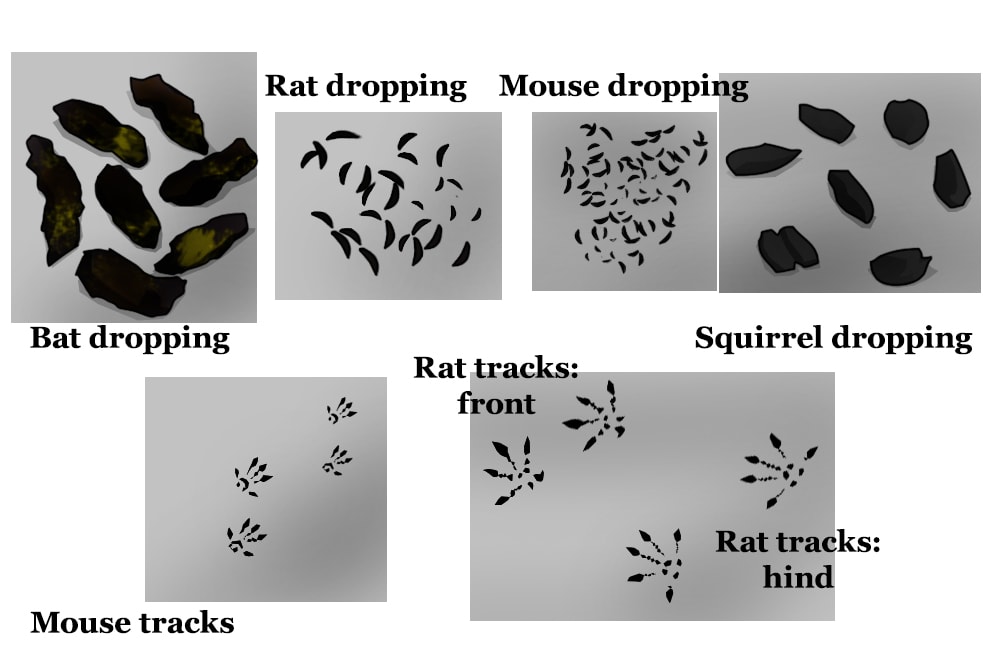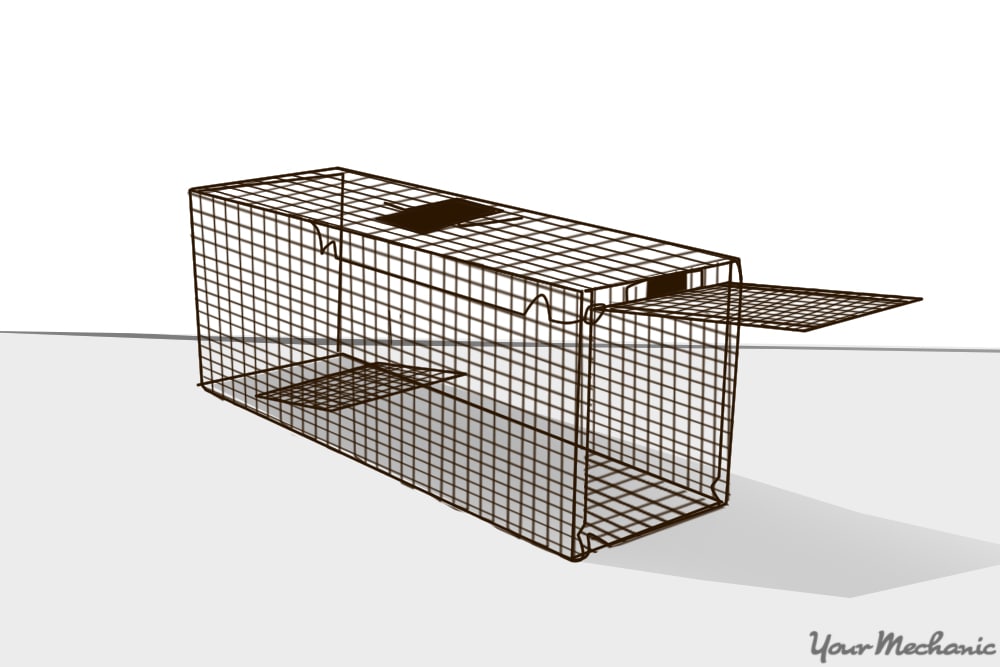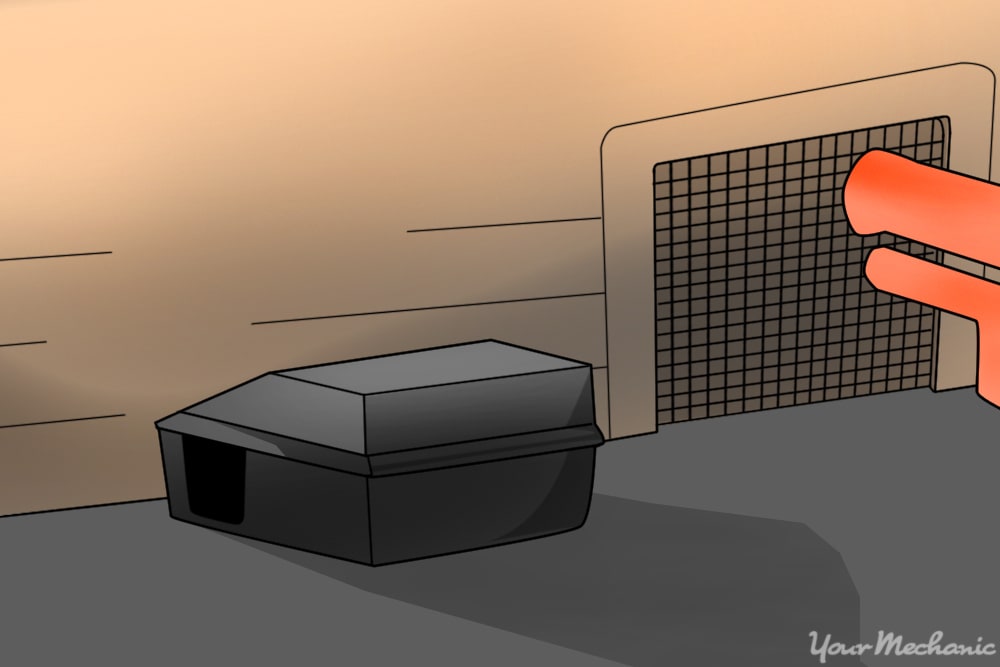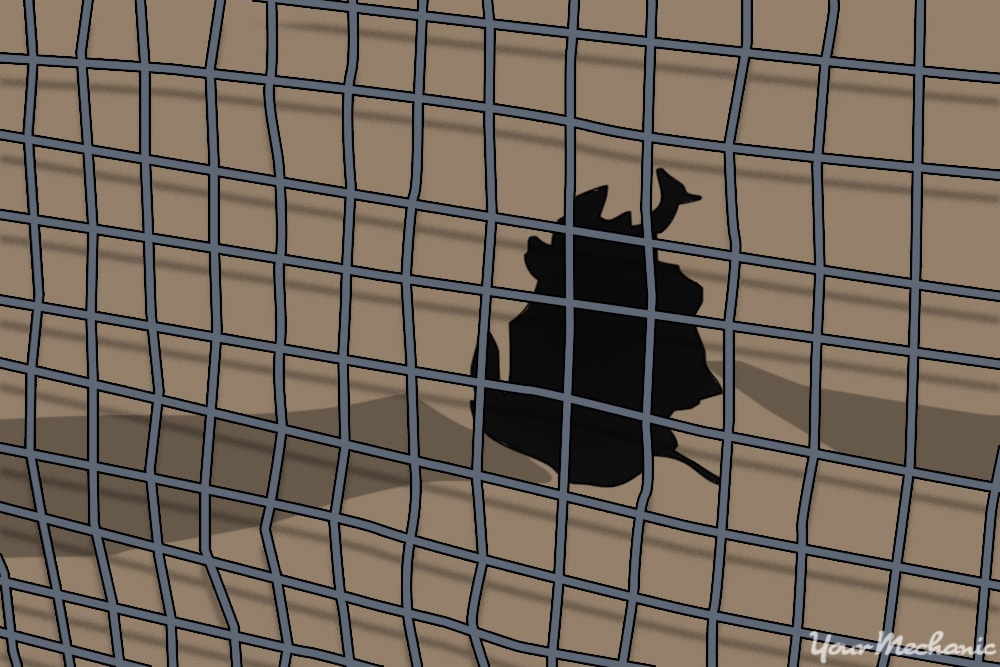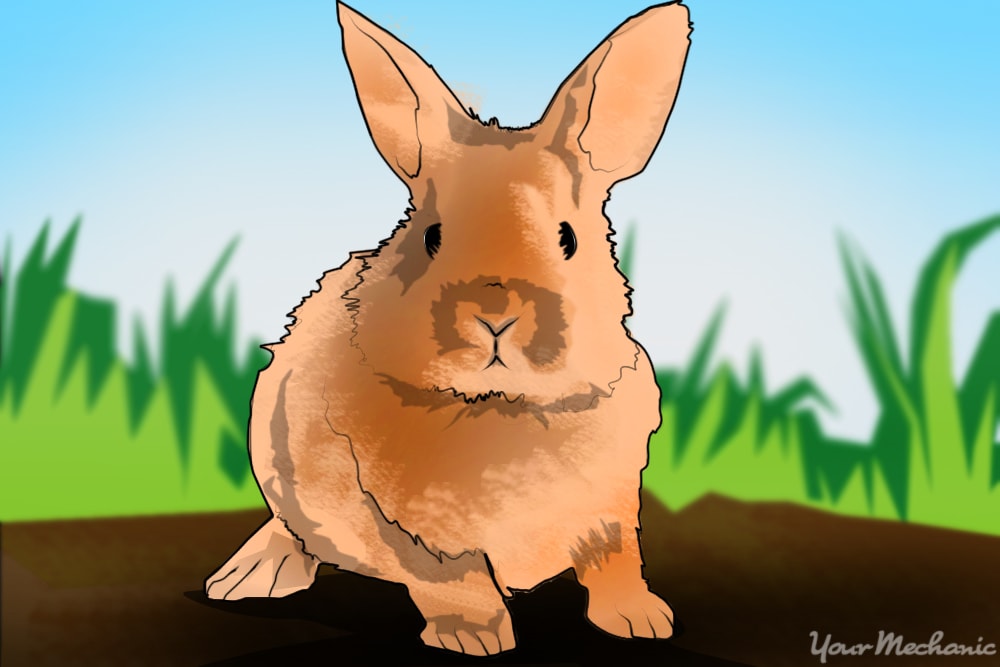

While at first seemingly innocuous and innocent, rabbits can do significant damage to the wiring and lines in your vehicle. Along with rats and other rodents, rabbits like to get into the engine compartment of a vehicle because they are attracted to the peanut oil used to help pull the wiring through the tubing by the manufacturer. This is a big problem with stored vehicles, which might sit for a while without being checked.
Most often, you may not even realize any damage has been done until you are out driving, which is dangerous if the animal happened to chew on your brake lines. To prevent this from happening, you can follow some quick and easy steps.
Method 1 of 4: Determine where the rabbits or rodents are coming from
One way to remove the threat of animals from damaging your vehicle is to report possible nesting areas to city or county officials so they can remove them. Some popular areas that animals like to live around include areas with a readily available water or food source.
Step 1: Look for signs. There are a few things you can look for to determine if animals, such as rodents and rabbits, are living in your area.
Droppings, or feces, are a sure sign that animals are living, or at least moving, through your area.
Rabbit droppings look like round tiny balls usually in clumps.
Rat feces are thin, hard, and long.
Some other signs are a rabbit's or rodent's presence include animal tracks, especially around water sources; clumps of fur; and sighting the animal themselves.
Step 2: Report the problem. If you see problem animals, report them to the appropriate authorities, usually the Animal Control office.
While Animal Control won't remove animals such as rabbits, possums, or other animals indigenous to the area, they might provide traps to catch wild animals, such as rats, in the interest of public safety.
Method 2 of 4: Setting traps
Materials Needed
- Trap (appropriate to the animal you want to capture)
Bait (peanut butter, cheese, or specially made attractants)
Tip: In addition to setting traps, you can use pure peppermint oil to deter rodents and rabbits from taking up residence in your vehicle's engine area. Apply a few drops to some cotton balls and place them throughout the engine compartment, making sure to avoid placing them near engine parts that get hot. Mothballs also work.
Traps are an excellent way to remove pesky animals that like to chew on your vehicle's wiring. The problem lies in the fact that capturing the offending rodent or rabbit might not alleviate the problem, as more of the same type of animal move into conditions favorable to them. Traps in combination with other methods might represent a better solution.
Step 1: Determine the pest. The first thing you need to do when buying traps is determining exactly what kind of pest you are dealing with.
You can accomplish this by looking for signs of the pests, such as droppings, and then looking online to try and match what you found with known problem animals.
Step 2: Buy the traps. Purchase the traps.
Determine how many traps you need to buy. If there is a high population of the rodents in your area, you should buy enough traps to take care of the problem.
Step 3: Position the traps. Trap positioning is an important consideration.
You should position traps in the pathways that the critter uses. This ensures that they are exposed to the bait in the traps, leading to a higher capture rate.
You have the choice of using traps that kill or traps that just capture the offending animal.
Step 4: Bait the traps. Don't forget to place bait in the traps that you use.
Some good bait alternatives include peanut butter, cheese, and specially formulated baits geared to attract animals to them.
- Tip: Your best bet might be to hire a professional to do the job. Pest control professionals are highly trained in pest removal and usually have access to equipment specially made for individual pests.
Step 5: Using poison. Another alternative to traps, you can use poison to kill rats and other rodents.
The main problem with poison is that the pest might not die immediately and could crawl back to their nest and die. This is especially troublesome if the nest is within the walls of your home or if they are nesting in the vehicle.
- Warning: Poison is probably not an option if you have pets. Pets could eat the poison and either get sick or die from it. Even traps could present problems when you have pets, as they could accidentally trip the trap themselves.
Method 3 of 4: Restrict access
Restricting access to your vehicle represents another way to keep out rodents, rabbits, and other animals. More often than not, this method alone is not a viable solution for rodents like mice and rats. This is due to the fact that some rodents can squeeze through very narrow openings, making restricting access very difficult. Restricting access coupled with traps is a better solution. In any case, storing your vehicle outdoors makes it hard to restrict access to pesky critters.
Step 1: Look for areas of access. Walk around the perimeter of where you store your car if it's inside a building.
Look for any openings that would allow entry to small animals. This could include openings near the base of a garage door roll-up door, broken windows, or even breaks in the siding.
Also, look around the roof to make sure there are no openings there that allow access to the area where you store your vehicle.
Step 2: Seal the openings. The next step is to seal all the openings you found on your search.
For garage doors, this could be as simple as replacing the weather stripping along the bottom.
Wire mesh is another material used to cover holes that animals might use to access a location.
Make sure any materials you use are of sturdy construction. Unfortunately, rats, mice, and other rodents can chew their way through softer materials, making an entry for themselves. Consider purchasing repair materials that can resist such attempts by rodents to chew their way in.
Step 3: Re-check the perimeter. You should occasionally walk around the perimeter of your storage building to make sure that rodents haven't found, or made, a new egress into it.
Another option is to spray a deterrent around the perimeter to dissuade animals from attempting entry. Of course, you need to reapply this deterrent occasionally.
Method 4 of 4: Clean up around your vehicle
Another method to keep away rats, rabbits, and other rodents is to clean up any trash or food items that could attract them. Areas of trash make a perfect place for rodents to live, while readily available food and water mean they have no reason to seek shelter elsewhere. In addition, many vehicle manufacturers use peanut oil to lubricate the shielding used to house a vehicle's wiring. It is no wonder that animals like to chew a vehicle's wiring.
Step 1: Clean the area. Clean up the area around where you store your vehicle.
Remove or properly store personal items. Do not leave them in a pile in the corner or outside your garage. This can attract rodents and give them the perfect place to live and breed.
Step 2: Look for water. Search the area and look for places where water might build up.
Some common areas include old tires or wood timbers. The wood timbers allow frost to build up and then melt into pools when the sun comes out. You should remove any little bit of water.
Step 3: Properly dispose of garbage. Properly dispose of and store your garbage.
Use sealable containers that keep rodents out.
Make sure that your trash is picked up regularly.
Rabbits, rodents, and other animals can cause a lot of damage to your vehicle's wiring if left unchecked, especially in a vehicle in storage. It is important that you take the necessary measures to stop their activity when you first discover it. In cases where the damage is already done, contact an expert mechanic to check out your wiring and lines and replace them if necessary.


